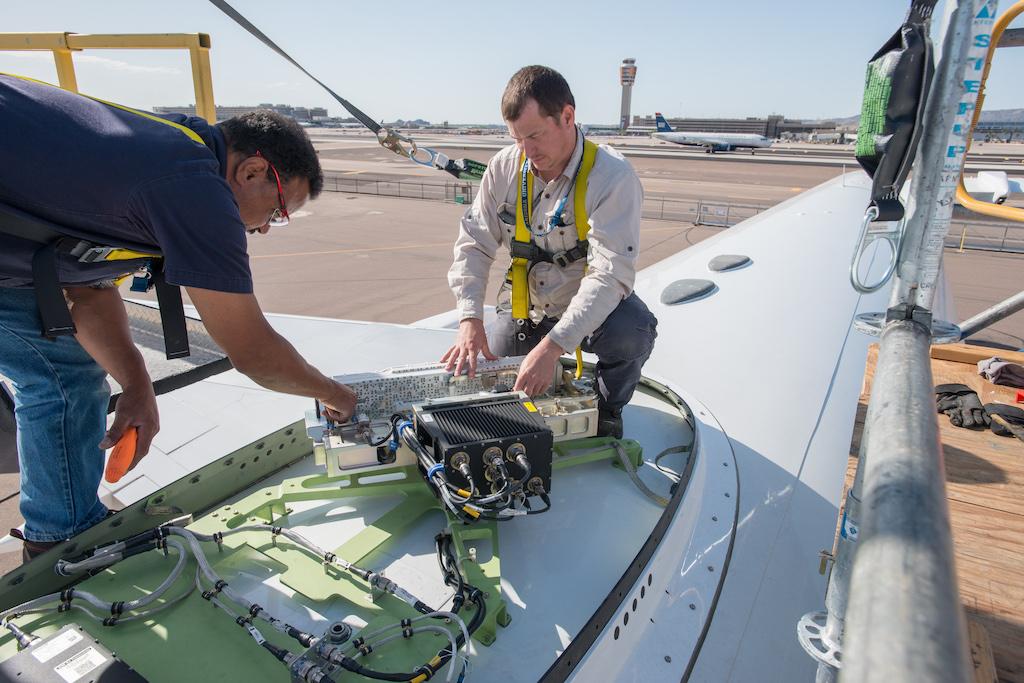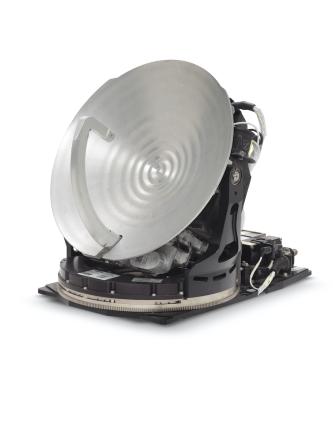
The coming low Earth orbit (LEO) satellite constellations promise to revolutionize inflight connectivity (IFC). With global LEO proliferation, passengers on private and commercial jets, using their own electronic devices, will be able to duplicate a home or office internet experience, and virtual private network (VPN) connection, inflight, without annoying data latency as aircraft transition among separate geosynchronous (GEO) and non-geosynchronous (NGEO) satellite systems.
For the antenna OEMs, business jets present their own set of challenges and may require more customized solutions in preparation for the new LEO networks. Much of this has to do with the fact that, compared to a commercial aircraft, a business jet is more constrained in terms of size, weight, payload and power generation capability.
“Business aviation customers are expecting the same high-speed experience--from streaming video to using mobile apps—that they can get on a commercial flight and on the ground,” says Brad Smith, systems engineer management, global enterprise & mobility for Viasat. “Working closely with the airframe OEMs to understand these constraints, and ensure the right hooks are in place to accommodate an antenna, is key.”
Asked if a single standard exists for radome size and power output for business aircraft, Smith notes that “in some ways, yes,” but not to the extent seen for commercial aircraft that use ARINC 791 and 792--the standards allowing the integration of any number of future antennas onto large commercial airliners, provided they fit within the prescribed footprint and other parameters.

“Unlike commercial airliners, business aircraft radomes tend to be very integral to the aircraft, typically residing on the top of the empennage. This makes each radome shape and size customized to a particular aircraft,” Smith explains. “There are common building blocks--with airliners--in some areas, but the implementation is tailored to the platform. Viasat works very closely with its OEM partners to ensure we develop solutions with the broadest possible applicability to different business aircraft categories.”
Viasat believes that the antenna and entire terminal--including the radio frequency (RF), electronics, modem and other peripheral equipment--must be flexible to leverage as many high-capacity satellites as possible. Its current generation of antennas is operable on NGEO satellites, such as LEO, middle Earth orbit (MEO) or high elliptical orbit (HEO) satellites, he says. At the same time, electronically steerable antennas (ESA) are a key part of Viasat’s antenna technology roadmap.
“Earlier this year, we conducted flight tests of an ESA technology demonstrator as part of our ongoing research and development efforts,” says Smith. “ESAs are clearly possible, but technical challenges remain. Power consumption and dissipating the resulting heat, remains a challenge to ensure ESAs perform reliably in the demanding aviation environment.”
ESAs have both a lighter weight and smaller size advantage over mechanically steered antennas, as well as the absence of moving parts and lower maintenance costs. However, the technical challenges, as well as costs, have slowed product introductions across the industry. According to Jake Sauer, vice president of Ball Aerospace, it is imperative for the industry to overcome both cost and maturity obstacles to reach an ESA solution that will be adopted.
“Designing ESAs is more challenging than many realize,” Sauer points out. “At Ku, K and Ka frequency bands, the area on a printed circuit board behind the antenna elements is very small and doesn’t leave much space to attach the antenna’s electronics.” He adds that the high level of integration into a small space requires a well-designed thermal solution to efficiently remove the heat from these antennas.

Sauer says that by using the same modular ESAs in multiple-use cases and markets, including military and commercial, “mass-production techniques can be utilized to drive down the cost-per-unit while driving manufacturing volumes up,” resulting in airborne ESA terminal costs projected below those of current mechanically steered solutions.
“Using the same antenna building blocks--subarrays, antenna control units, frequency conversion units and software--is essential to reducing development cost and driving volume into the supply chain,” he stresses. “Ball Aerospace has designed Ku and Ka ESA subarrays that allow the same ESA building block to be used in both military and commercial markets.”
According to Sauer, ESAs address the challenges of size and weight considerations that are important to the business jet market. As he explains, the external space is very limited compared to a commercial airliner.
“A business jet antenna needs to be small, low profile and visually blend into the plane, while meeting broadband requirements,” he notes. “The size of these antennas will be driven by the satellite performance and how operators are configuring their networks. LEO satellite operators should have an advantage with this market because these satellites are well suited for connecting mobile platforms and support smaller ESA antennas.”
Along with that, says Sauer, the market is demanding future-proofed systems.
“Customers want to purchase an ESA terminal that will connect with today’s GEO satellites and has the capabilities to connect with tomorrow’s NGSO and GEO satellites,” he notes. “Ball Aerospace antennas have been designed to support that application and have been tested on both GEO and LEO networks using the same antenna hardware. What differs is the software and the modem.”
John Peterson, vice president & general manager, software and services, at Honeywell Aerospace, cautions that the major challenge for current satcom antennas is building a product capable of working reliably for years in an environment that ranges from very hot, when an aircraft is on the ground, to well below freezing when a business jet is cruising at altitude.
“There’s more to that than many terrestrial antenna providers realize, and we are very confident that the current Honeywell JetWave tail mount antenna terminal meets these challenges. But we are also aware of customers’ desire for continuous improvement,” Peterson states.
Introduced in 2016, the JetWave terminal has been certified on multiple business aircraft. Using a mechanically steered antenna, JetWave is currently operable only on the Inmarsat GX Aviation network, which uses GEO satellites. However, as Peterson reports, Honeywell continues to work closely with newly planned satellite network providers in order to include MEO and GEO in its product plans. “Both are supportable with a mechanically steered antenna,” he explains.
In a recent development, Honeywell has completed an STC for JW2, a version of JetWave that operates on ChinaSAT satellites, serving domestic Chinese airlines. Another recent JetWave release, JW MCX, has operated on an expanded Ka frequency range into military band, with wideband global satcom certification wrapping up. Peterson says that at the same time, Honeywell is watching ESA technology very closely. “In the near term, we have concerns about technology maturity but share the industry’s optimism for its potential use in aerospace applications in the not-too-distant future,” he notes. “The keys for ESA technology to enter the aerospace market will be size, weight, power and heat dissipation, and of course it must also be cost competitive.”






